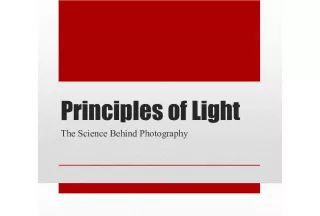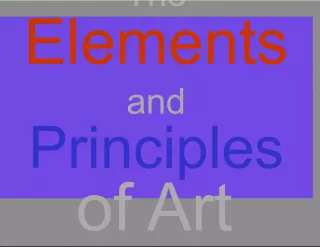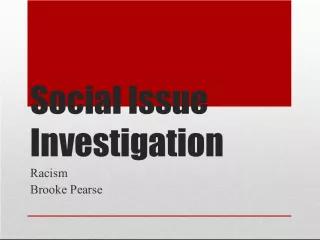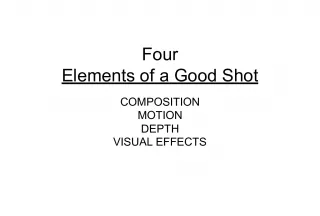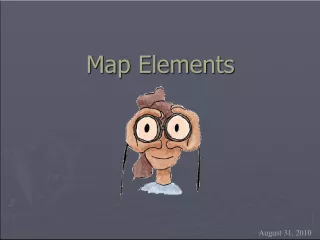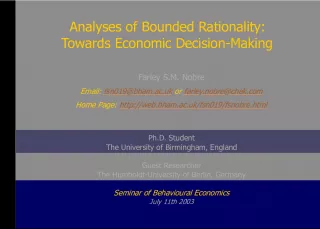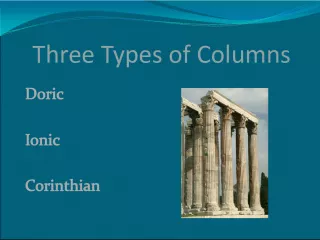Exploring the Elements and Principles of Design in Alphabet Photography Triptych Mono with a Splash
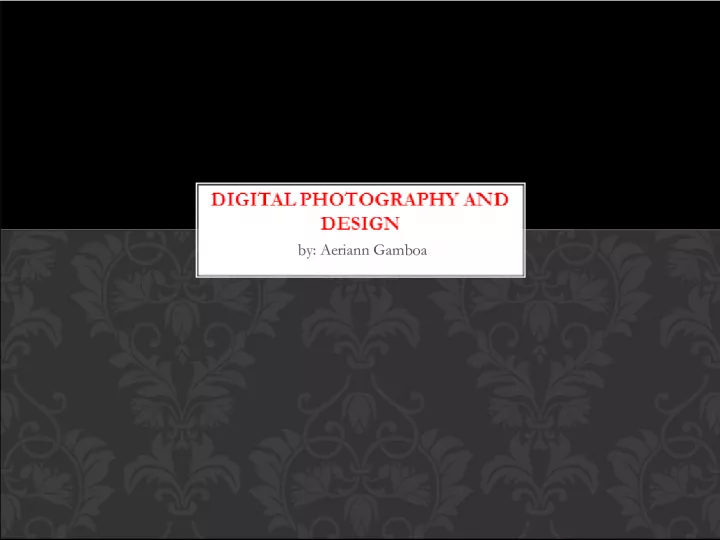

This artwork by Aeriann Gamboa captures the beauty of the Elements and Principles of Design through Alphabet Photography Triptych Mono with a
- Uploaded on | 0 Views
-
 sohaila
sohaila
About Exploring the Elements and Principles of Design in Alphabet Photography Triptych Mono with a Splash
PowerPoint presentation about 'Exploring the Elements and Principles of Design in Alphabet Photography Triptych Mono with a Splash'. This presentation describes the topic on This artwork by Aeriann Gamboa captures the beauty of the Elements and Principles of Design through Alphabet Photography Triptych Mono with a. The key topics included in this slideshow are . Download this presentation absolutely free.
Presentation Transcript
Slide1 by: Aeriann Gamboa
Slide2ALPHABETPHOTOGRAPHY
Slide3TRIPTYCH
Slide4MONO WITH A SPLASH
Slide5-Line - Shape - Space - Value - Color ELEMENTS OF DESIGN
Slide6LINES
Slide7LINES
Slide8LINES
Slide9SPACE
Slide10POSITIVE/NEGATIVE SPACE
Slide11DEEP SPACE
Slide12SHALLOW SPACE
Slide13FRAMING
Slide14VALUE
Slide15VALUE
Slide16VALUE
Slide17VALUE
Slide18VALUE
Slide19COLORS
Slide20TEXTURE
Slide21-Repetition/Pattern - Balance - Emphasis - Contrast - Movement - Unity PRINCIPLE OF DESIGN
Slide22REPETITION/PATTERN
Slide23BALANCE
Slide24EMPHASIS/FOCAL POINT
Slide25CONTRAST
Slide26MOVEMENT/RHYTHM
Slide27UNITY
Slide28PORTRAIT
Slide29SNOW DAY
Slide30PASCHKEI was inspired by Ed Paschke’s work that is why created this. I used image/ adjust to add some different colors in my picture. I also used filters to change the texture of my picture.
Slide31-He was born in 1939 in Chicago. - His father was his first art teacher. - Likes a lot of colors. - Went to The School of The Art Institute of Chicago. ED PASCHKE BIOGRAPHY He receives commendation for figure drawing from the School of the Art Institute.
Slide32PASCHKE’S WORK
Slide33FORESHORTENING
Slide34OBSCURING THE IMAGE
Slide35FORCED PERSPECTIVE
Slide36What is Surrealism?- A 20th-century avant-garde movement in art and literature that sought to release the creative potential of the unconscious mind. Who were famous Surrealist artists? - Salvador Dali (1904-1989) - Max Ernst (1891-1976) - Rene Magritte (1898-1967) - Joan Miro (1893-1983) When and where did Surrealism originate? - Sometimes through history, something comes along that changes everything as it has been known thus far. In the 1920’s, such an art movement came around that changed the way art was defined. The Surrealist art movement combined elements of its predecessors, Dada and cubism, to create something unknown to the art world. The movement was first rejected, but its eccentric ideas and unique techniques paved the way for a new form of art. SURREAL ART
Slide37JUXTAPOSITION
Slide38DISTORTION
Slide39DISGUISING
Slide40FRAGMENTATION
Slide41FEATHERING
Slide42SURREAL COLLAGEThis picture was taken in the outer space. This image shows that aliens are trying to conquer the earth by attacking it. I used mask tool, feathering and magic wand tool.
Slide43CAMEO APPEARANCE IN AFAMOUS WORK OF ART This work of art was the American Gothic by Grant Wood. I took out the face of the old guy and put the face of my friend. I used mask tool, color balanced and transform tool. Those were the tools and techniques I used to blend my friend’s face in this image.
Slide44CAMEO APPEARANCE IN A MOVIESCENE This photo was taken from the movie Tropic Thunder. I put my friend’s picture in the background inside the helicopter. I used mask tool, filters and effects like inner shadow and satin to blend the picture. Those were just the basic techniques I used to blend my friend’s picture in this image.
Slide45IMPRESSIONISM
Slide46IMPRESSIONIST RESEARCHDerived from Claude Monet's piece entitled Impression , the term "impressionism" was created to describe the work of a select group of Parisian painters in the late 19th century. With their thin brush strokes and explosion of color and lighting on mundane subjects, impressionists painters like Monet, Mary Cassatt, and Alfred Sisley confounded critics, defied conventions, and sparked scandal.
Slide47OP ART PRACTICE
Slide48OP ART PROJECT
Slide49OP ART RESEARCHIn October of 1964, in an article describing this new style of art, Time Magazine coined the phrase "Optical Art" (or " Op Art", as it's more commonly known). The term referenced the fact that Op Art is comprised of illusion, and often appears - to the human eye - to be moving or breathing due to its precise, mathematically- based composition.
Slide503D OP ART
Slide51ART SHOW POSTER
Slide52TYPOGRAPHY EXERCISE 1
Slide53TYPOGRAPHY EXERCISE 2
Slide54TYPOGRAPHY EXERCISE 3
Slide55TYPOGRAPHY EXERCISE #4
Slide56FINAL TYPOGRAPHY

